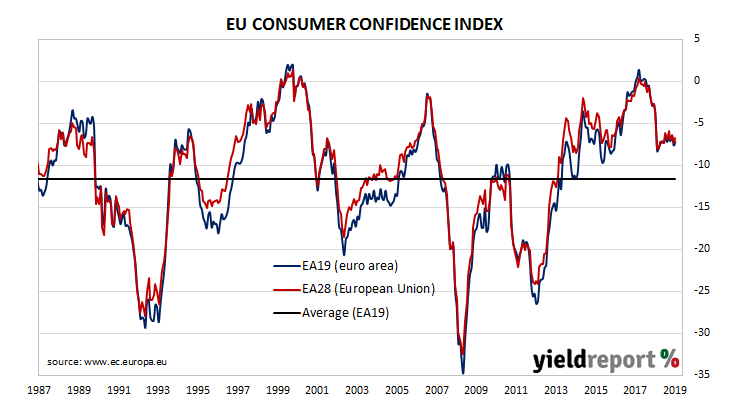EU consumer confidence plunged during the GFC and again in 2011/12 during the European debt crisis. Since early 2014, it has been at average or above-average levels, rising to a cyclical peak at the beginning of 2018. However, it dropped back significantly in late 2018 at about the same time as doubts emerged over the US economy’s robustness. Since then, it has remained fairly steady, largely ignoring the trade spat between the US and China, although there has been a small amount of variation from month-to-month.
The November survey conducted by the European Commission indicated household confidence remained at robust levels. The latest published measure of Consumer Confidence index produced a figure of -7.2, indicating households were slightly more confident than in October when the index registered -7.6. The average reading since the beginning of 1985 has been -11.6.
The figure was slightly better than the -7.3 which had been expected and German and French sovereign bond yields increased modestly. By the end of the day, the yield on German 10-year bunds had added 2bps to -0.33% while the French 10-year OATS yield had gained 3bps to -0.01%.

